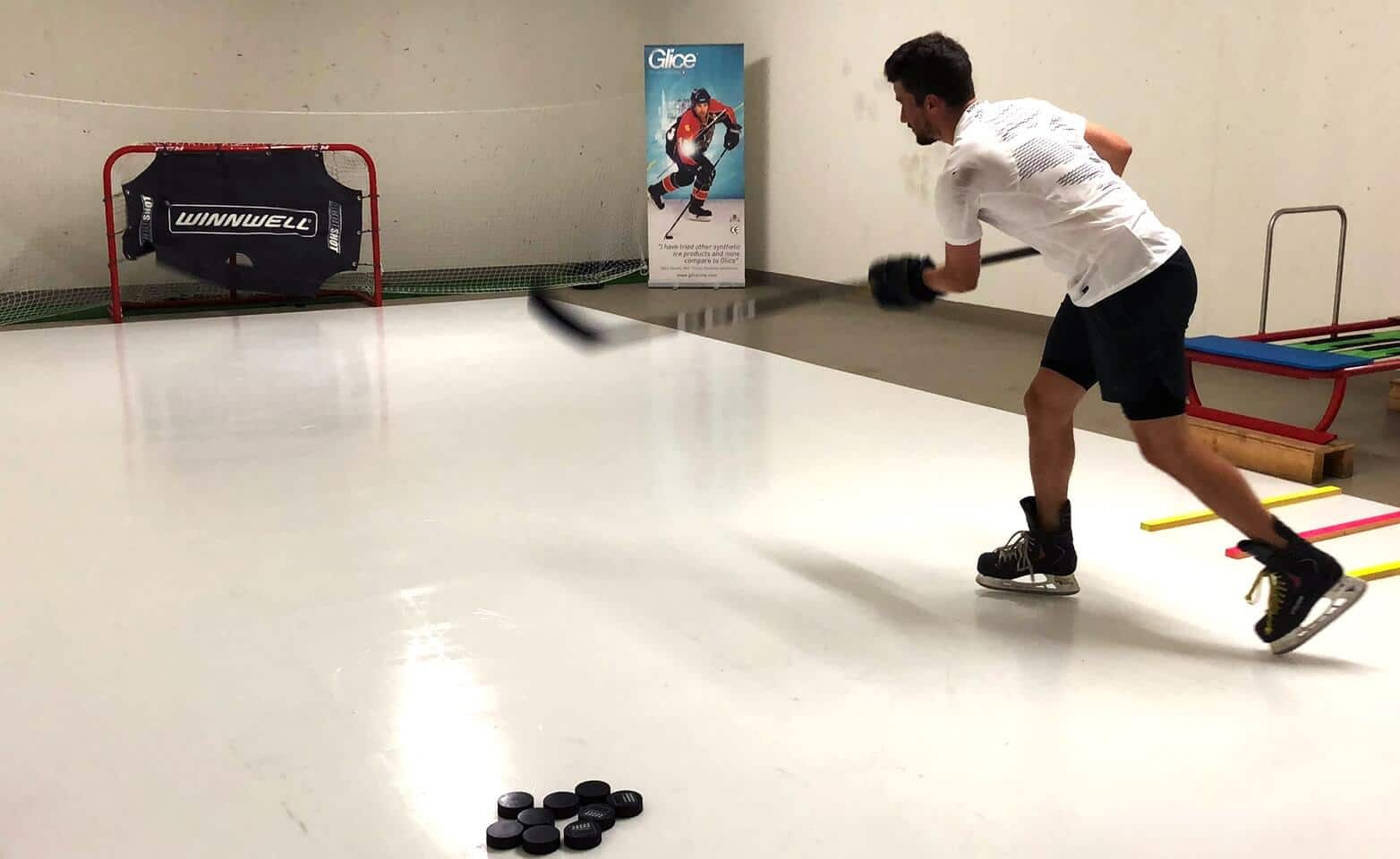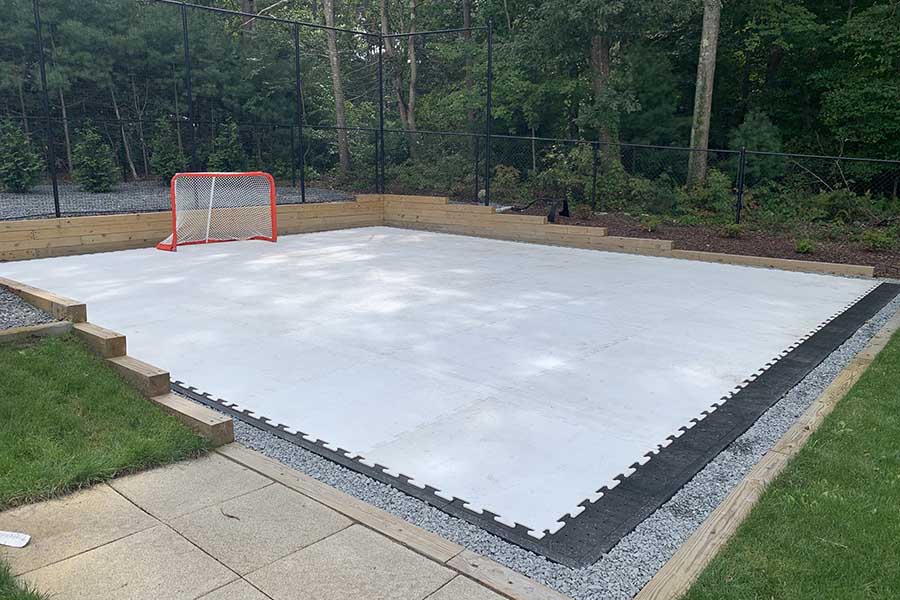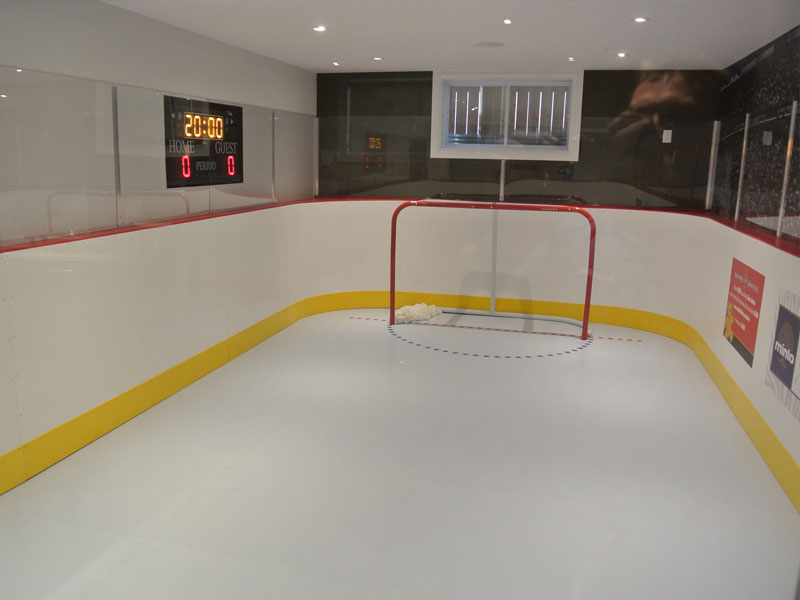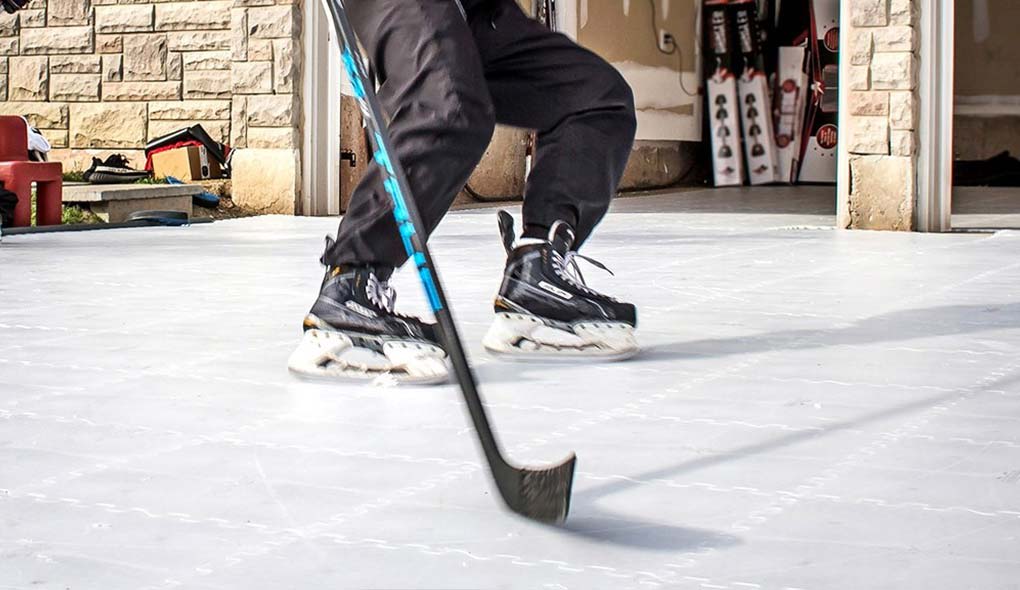Over the last couple of years, between 2019 and 2021, the popularity of synthetic ice has made a steady -but steep- climb towards becoming the preferred flooring for hockey players. One of the reasons behind this is that during the pandemic, when everybody was forced to stay home, hockey lovers learned that they could build their own ice skating rink in the comfort of their homes. Once people learned how easy it was to install a full-fledged ice skating rink in their home, synthetic ice panels began to fly off of all the shelves.
Table of Contents
The Difference Between Real and Synthetic
Since the word “synthetic” refers to something that is made by human hands, traditional ice could technically be viewed as synthetic as well. However, we won’t complicate things with alternative points of view. If we did use that frame of reference, we’d have to look more at one of the most popular old examples of synthetic ice that was made in England over a hundred years ago. This ice was supercooled with chemicals and was entirely skateable, other than the fact that the ice had fog rising off of it. That fog created visibility issues, which means that it worked well for ice skaters and less well for anyone trying to use this ice to play hockey.
Because we’re looking at the benefits for hockey players in this article, that ice doesn’t really help our case. So, what exactly is the difference between synthetic and true ice? Let’s start by looking at the properties of true ice. True ice is made up of frozen water. The process of freezing water is even simple from a chemical standpoint. Once the water is cooled down to 0 degrees Celsius or 32 degrees Fahrenheit the molecules slow down enough to turn the liquid into a solid. This phenomenon can be seen firsthand in many parts of the world during the colder months, or even just in your freezer’s ice maker or ice cube tray.
Synthetic ice is a different beast altogether. This ice is made by humans, for humans. Back in the early days of this type of synthetic ice, it wasn’t uncommon for manufacturers to use polyoxymethylene plastic in the manufacturing process. This created very rudimentary synthetic ice tiles that needed to be regularly lubed up and cleaned. This ice was far from ideal and was nowhere near being as good to skate on as real ice, but it did work for the purposes that it was created for, which was creating a way to make an all-climate ice skating rink.
Fast-forward a few years, and you can start seeing a lot of innovation in this field. Manufacturers started moving away from polyoxymethylene plastics to make their synthetic ice tiles and it became more and more common for other materials to be used. Today, it’s most common for manufacturers to use high-density polyethylene plastic or even ultra-high-molecular-weight polyethylene to make their synthetic ice tiles. These materials allow for a much smoother skating experience for people that are attempting to skate on them, which means that they’re especially good for hockey training, specifically for hockey training that takes place in one’s home.
How Does Synthetic Ice Fair Against Real Ice?
When it comes to this kind of conversation, the question of “which is better?” is often brought up. It’s an entirely fair question to be asking of the subject, especially when this conversation is often had by hockey players that are looking for their best options to help them increase their skills on the field. This question is just as complicated as it is simple, and with a bit of nuance, you can understand the real answer. The reason for this is that it really depends on what the question you’re actually asking is.
If all you’re asking is truly as simple as “which is better for playing hockey on, synthetic or real ice?” then there is a clear, objective answer. For this, true ice wins in every single category. It’s easy to skate on, requires less upkeep, and is just generally a more pleasant experience for skaters, whether they’re playing hockey or just skating around the rink for the fun of it. But, the answer gets a little more complicated when the question changes to something a little more specific. What exactly is the application that you’re looking at for the ice? That makes a huge difference.
All you need to do is change the question to “which is better for practicing at home, synthetic or real ice?” and you’ll notice that with different parameters, the question changes significantly. In this instance, synthetic ice is actually the clear winner. The fact that synthetic ice is a little harder to skate on means that it has some built-in resistance training. The tiles that make up synthetic ice rinks are modular, which means that you can just move the rink if they’re going to be in the way. It’s also a lot more convenient to have a synthetic ice rink at your house than it is to try and keep a true ice rink at your house, while also being significantly less costly to the homeowner.
So, the real question you should be asking is what is the purpose of the ice that you’re using? That will change the entire conversation and allow for a much more nuanced discussion between yourself and whoever it is that you happen to be speaking with. By knowing exactly what you’re talking about when entering into this conversation, you can reach the goal of it a lot more quickly than you would otherwise, which means shorter conversations with better end results. That’s a good thing for everyone involved and can make a world of difference in what comes from the conversation.
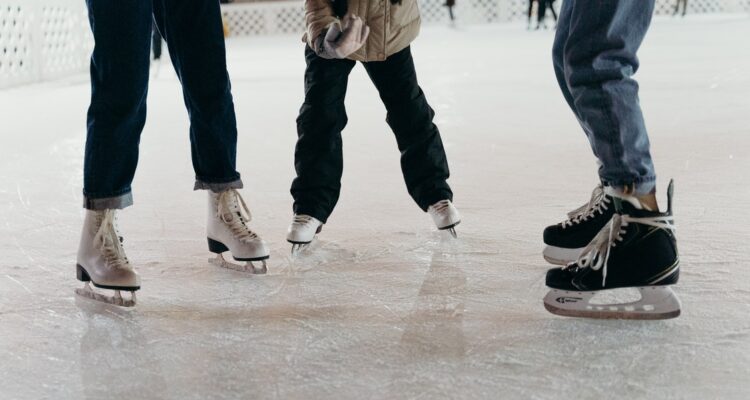
Getting the Best Training in for Hockey
Now, if you’re looking to get the best possible hockey training possible and are going strictly off of what we’ve said in this article so far, you may feel more than a little misled if you follow through. We did say that synthetic ice is better for training at home, but if you’re playing hockey, you’re going to want to make sure that you’re getting the best possible training all around and only training at home on synthetic ice could leave you severely lacking where it counts most. Of course, getting that at-home, on-ice training is helpful, but it’s only a part of the kind of training that you’ll need.
For example, you’re also going to need regular on the ice training with your teammates. This will help with your teamwork skills as well as coordination. Those are both critical for when it’s time for you to play real games against other teams. Training on real ice also allows you to get more familiar with the feeling. Resistance training is really good, but when game day comes you want to make sure that skating on real ice is a matter of muscle memory so you don’t find yourself struggling with the lack of resistance. True ice allows for much easier gliding, so training too much on synthetic ice can feel a lot like going from driving a UHaul truck to a Honda Accord.
You’re also going to need to make sure that you’re getting some strength and cardio training in so you’re strong enough and fit enough to make it through every game. That means you can do things like wind sprints to get your endurance up and your choice of strength training. Some people prefer just doing bodyweight training like pushups, situps, squats, etc. Other people prefer going to a gym because of all of the machines and free weights available. Whatever works best for you is probably the best option, the most important thing is that you’re getting the training.
A well-balanced training regimen is the best way to make sure that you’re as competitive as possible on the rink when real games come. The stronger, faster, and more coordinated your team is, the more likely you’ll be able to overwhelm the other team and bring yourselves to victory, maybe even up to the championships. Training makes a huge difference in your ability, and as long as everyone on your team is carrying their weight, you could easily get a huge edge over your competitors game after game.
Learning More About the Tools of the Trade
One of the most important and yet most commonly overlooked things in hockey is learning more about the things that make hockey work. Your blades, puck, protective gear, stick, and even the surface that you skate on makes a huge difference in how you’ll be able to play. Hockey is a game of skill, but in any game of skill, there’s still a huge strategy aspect involved. Whether you’re new to the rink or a seasoned veteran, there’s always something new to learn that can help you adapt your strategy to make it even more effective than it was before.


